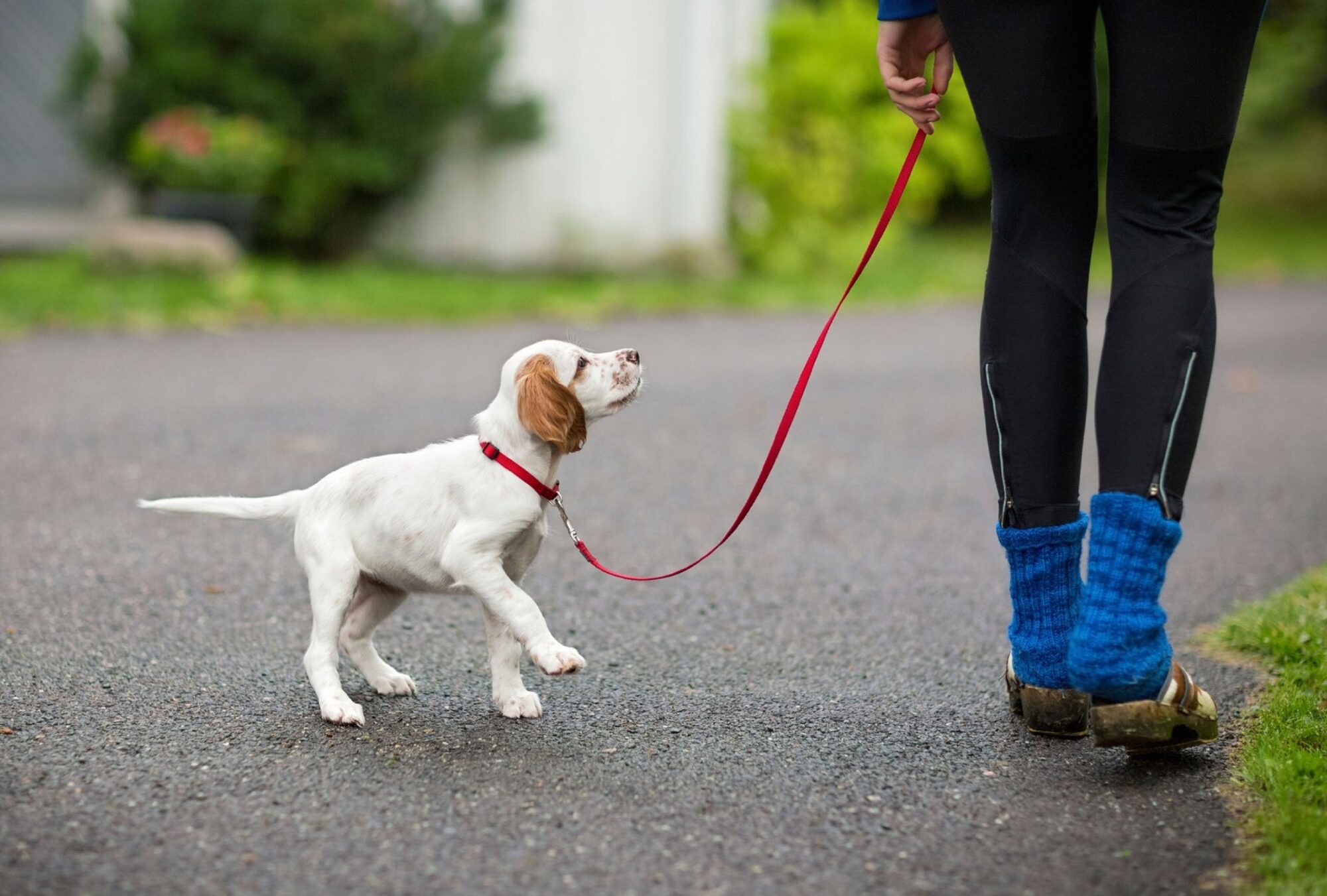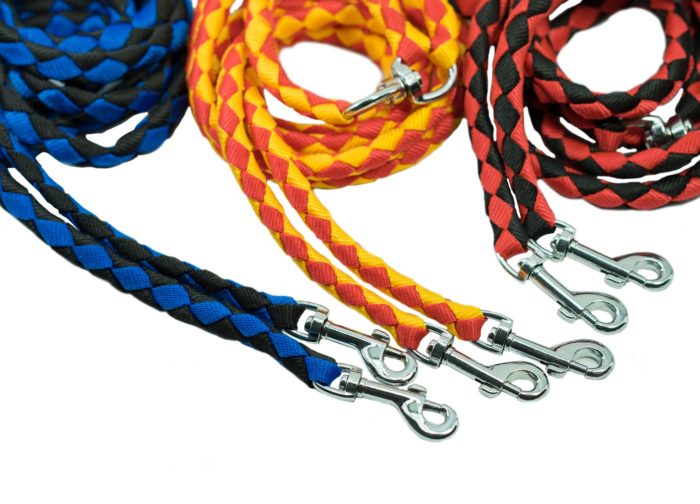How to train a puppy to walk on a leash without pulling
Here’s the thing….dogs don’t know how to walk with us. And they certainly don’t know how to walk with us on a lead. It’s a skill they have to learn, like any other. Lots of people are looking for help and asking “How to train a puppy to walk on a leash without pulling?”. And here we try to answer it shortly 🙂
How to leash train a puppy?
And it can be a difficult skill for them to learn. Humans and dogs move at different paces, move in different ways, have different priorities and experience the environment very differently. So attaching one to another creates potential conflict right away. Our motivation and goals are often very different, or even in conflict with one another. And it’s a difficult skill for the human end of the lead to master too. Good lead handling and body movement is a skill that takes practice and for new puppy owners managing the lead AND the dog AND a clicker AND food can seem overwhelming.
When we teach loose lead walking what are we actually teaching our dogs to do? Not pull on the lead? Or to move with us regardless of the lead? If we focus only on what we DON’T want we aren’t really teaching what we DO want.
What we really want is a dog who can move comfortably with us through the environment regardless of whether they’re attached to us by a lead or not. Your lead is a safety belt, not a steering wheel.
Before we begin – best way to leash train a puppy
Teaching loose lead walking is much easier if you get the mechanics right. I like to hold the lead and clicker in the hand opposite to my dog (so if my dog is on my left I hold the lead and clicker in my right). That leaves the hand beside the dog free to deliver treats. Then I either have a treat pouch on my left hip (the same side as my dog for easy feeding) or I hold a stash of treats in my right hand alongside my clicker and deliver them with my left. Practice without your dog at first to familiarise yourself with the movements.
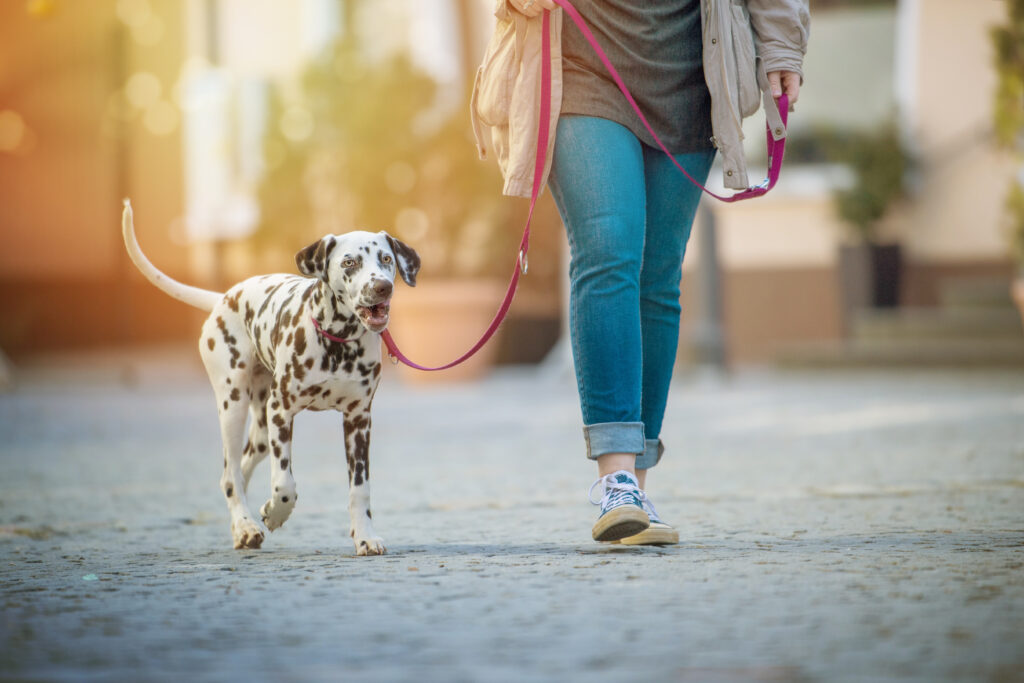
Leash puppy training: Stage One – No Lead
When I teach loose lead walking the first thing I do is remove the lead! Teaching loose lead walking without the lead sounds counterintuitive but removing the lead makes it easier to focus on what we are actually teaching – having our dog move with us by our side. Working without a lead stops accidental or unintentional lead corrections, removes the temptation to nag the dog with the lead and removes a potential distraction for both dog and handler. We reinforce our dog for moving by our side, building the behaviour we want… not stopping what we don’t. This is an important thing in puppy lead training.
Start with your puppy beside you and lick and treat rapidly, maintaining a high rate of reinforcement, for proximity next to you. (As an aside, for pet dog training there is no “correct” side for your puppy to walk on. Left, right, both….do whatever works for you). When your puppy is focused on you take a step forward. As soon as your puppy begins to move to follow you click and treat. Delivering the treat consistently in the same place, by the side of your leg, each time will reinforce that position. Feeding with your palm towards your puppy will also help him remain in the correct position by your side. Repeat this until your puppy is moving reliably by your side as you walk, turn and change directions, click and treating as you go. Change direction every few steps to help maintain your puppy’s attention. Keep your rate of reinforcement high. Remember moving with us can be a challenge for puppies so while they are learning we need to make it worth their while!
Puppy lead training: Stage Two – Add the Lead
Now that your puppy is moving fluently by your side we can add in the lead. Loop the lead over the wrist on the opposite side to your puppy and repeat the previous exercise. We’ve introduced a new, potentially distracting element so we need to relax our previous criteria. Start by click and treating any movement with you and keep the rate of reinforcement high – treating every step to start with.
Remember that your goal behaviour is to have your puppy moving comfortably with you regardless of the lead. It can be tempting to use the lead to control your puppy’s movements but try to pretend it’s not there!
Stage Three – Add Duration and Distractions
Now that your puppy is moving with you on lead you can begin to develop and strengthen the behaviour. We can in distractions by working in busier, more exciting environments. We can ask our puppy to walk by our side for a little longer before we click and treat. But remember that when we make one element of a behaviour more challenging for our puppy we have to relax other criteria. So if you’re increasing distractions decrease the number of steps your puppy has to walk with you to earn reinforcement. Keep session short and fun and if your puppy starts to fail go back a step to keep him successful. It’s very important in training lead puppy.
A Word About Equipment
I’m often asked what equipment can help stop pulling and encourage loose lead walking but it’s not equipment which makes for connected, co-operative lead walking, it’s training. I recommend either a standard flat collar or a non-tightening harness like Perfect Fit or similar. A longer lead allows for more movement without pulling so use the longest lead you safely can for the environment you are working in; I most often use a 6ft or 8ft lead.
Loose lead walking takes time, patience and commitment but your effort will be repaid a hundredfold when you enjoy relaxed, calm and connected walks together for years to come.
See also other posts:
June 30, 2023
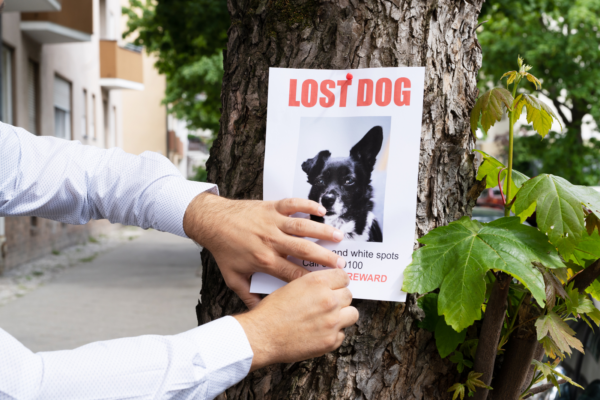
Get Your Lost Dog Back Home Quickly: Follow These 12 Tips for Success
Vacations favor more frequent and longer walks with our furry friends. We travel, visit new places. Summer makes us loosen our brakes and allow our…
June 30, 2023
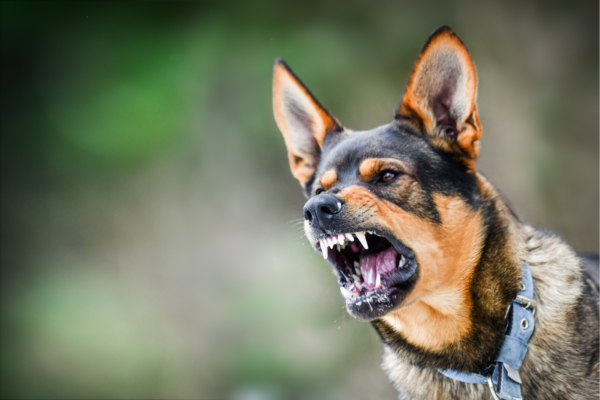
Managing Aggressive Dog Behavior: Tips for Peaceful Living
Living with an aggressive dog may seem challenging, but it can be peaceful and manageable with the right approach. One key aspect is to remain…
June 30, 2023
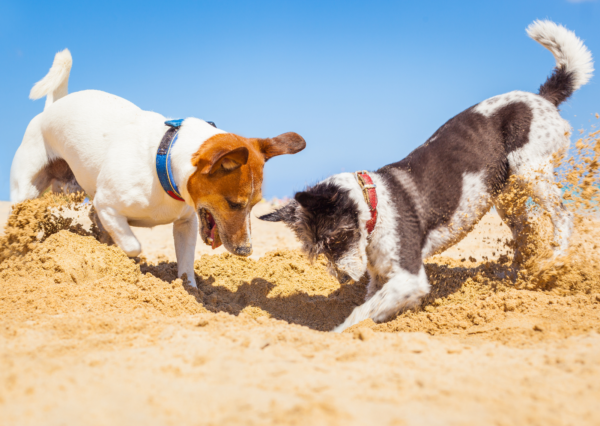
Unlocking the Secret to Successful Puppy Socialization: Quality over Quantity
Today, although the topic is very important, I will keep it brief. Socialization is a topic that could fill books or scientific papers. However, today…

